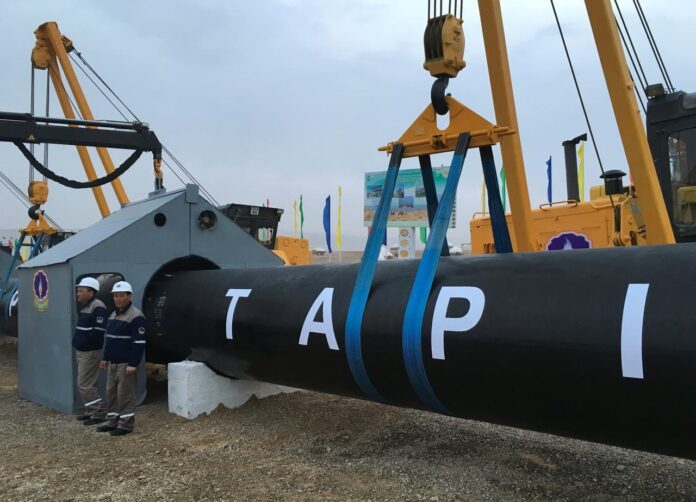ISLAMABAD: The government has utilised Rs2,819.98 million in advancement of two strategic projects, including the TAPI and PSGP to meet the country’s energy needs.
The government has collected around Rs332,107 million Gas Infrastructure Development Cess (GIDC) by October last.
“Total collection of GIDC from January 2012 to October 2021 stood at Rs332,107 million, out of which an amount of Rs2,819.98 million has been utilised as of November, 2021 in connection with Infrastructure Development Projects i.e. Turkmenistan, Afghanistan, Pakistan and India (TAPI) gas pipeline and Pakistan Stream Gas Pipeline (PSGP) (Formerly North-South Gas Pipeline (NSGP) Project).
The two gas pipeline projects have great significance for the country as its existing hydrocarbon deposits are depleting by 9 percent annually and the oil and gas exploration companies could not find any major deposits like Sui since long.
Under the TAPI project, a gas pipeline would be laid from Turkmenistan through Afghanistan and Pakistan up to Pak-India border. The planned construction and commissioning time of the project is two years after achievement of the financial close.
Turkmenistan, being the consortium leader for the TAPI project, is contributing up to 85 percent of equity, while the rest members Afghanistan, Pakistan and India have decided to take 5 percent each equity share in the project company.
The TAPI gas pipeline has been long aborning, but its prospects recently got a shot in the arm. The 1100-mile and $10 billion project, which has seen numerous delays since the pipeline consortium, was announced in late 2014, though the project was first mooted in 1991.
Construction started in early 2018 with a projected in-service date of 2021, but halted later that year after workers clearing the route were killed by unknown assailants.
Also, the project’s $10 billion cost estimate is a decade old, and an update may cause further delay to the Asian Development Bank-funded effort that is now slated to resume work in September 2022. Turkmenistan will loan Afghanistan the funds for its share of the project, to be repaid from gas transit revenues.
The completed pipeline will allow Turkmenistan to reduce its reliance on its biggest gas customer, China, which has recently taken most of Turkmenistan’s gas exports, though in 2021 the country doubled its gas exports to Russia, which used to be the biggest importer of Turkmen gas until it was displaced by China in 2010.
For Pakistan, the pipeline would help solve the country’s persistent energy shortfalls, such as the deficit between current gas production of 4 billion cubic feet per day (BCFD) against demand of 6 BCFD. By 2025, gas production is expected to fall to less than 1 BCFD due to depletion of gas reserves while demand increases to 8 BCFD.
In late 2020, Pakistan and Russia signed a deal to complete the 700-mile Pakistan Stream Gas Pipeline, to move LNG from Port Qasim (Karachi) to Kasur. Pakistan may be dealing with Russia to balance against China, or maybe the deal was decided on strictly dollars-and-cents terms. Regardless, this project may crowd out attention and funding for Pakistan’s phase of TAPI.























